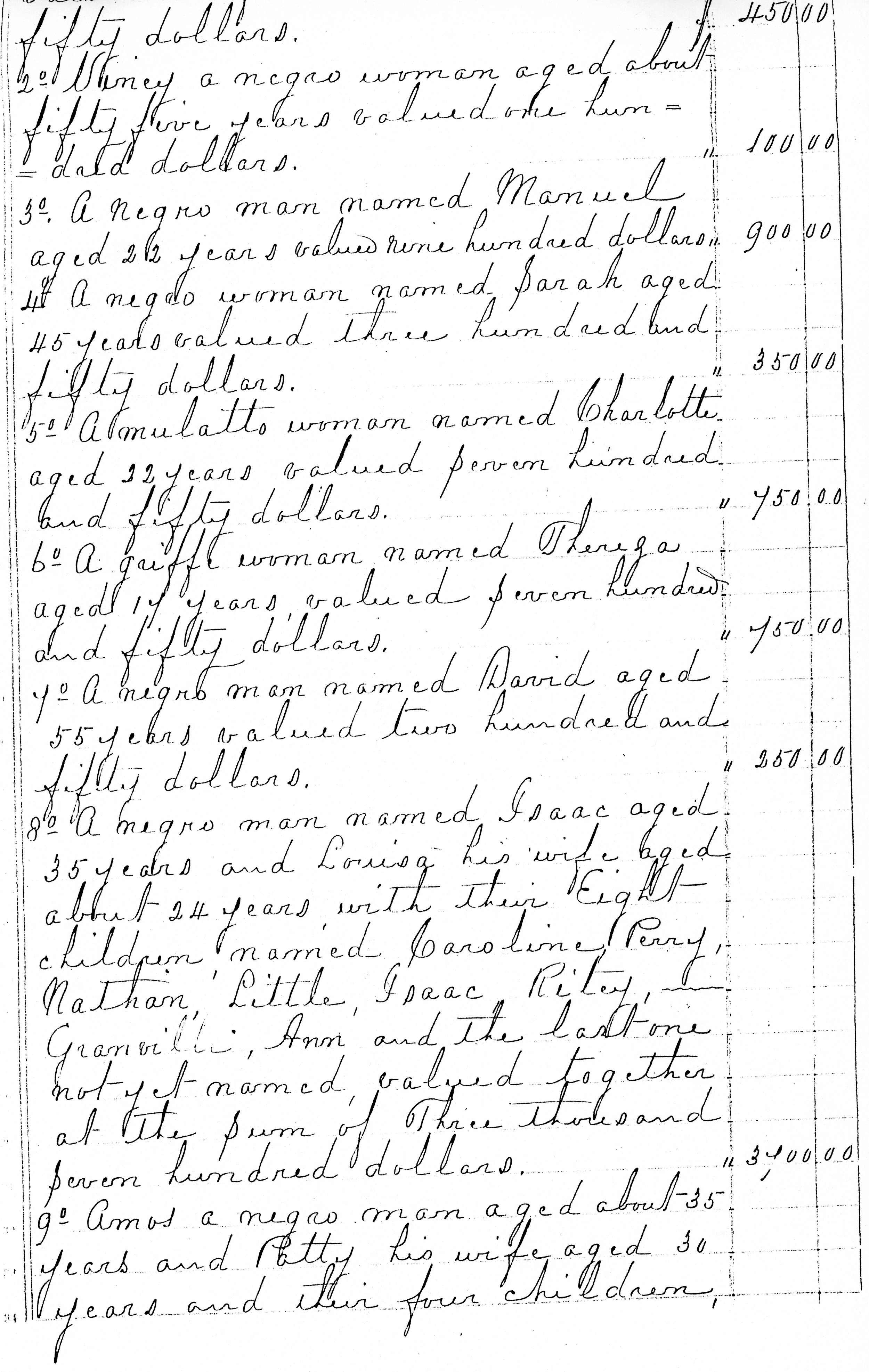Antebellum
A page from the 1835 inventory of David Weeks’ estate lists some of the “moveable property” at the Shadows. Shadows-on-the-Teche Archive
As newlyweds, David and Mary made their first home with William Weeks in the Felicianas. With William’s death in 1819, they moved to the Attakapas region, to a property on Bayou Parc Perdu, before turning their sights to 158 acres on Bayou Teche at New Iberia.
Construction of the Shadows-on-the-Teche began in 1831. One of only three brick structures in New Iberia in the 1830s, the house was a unique and beautiful combination of a Classical Revival style exterior with a Louisiana Colonial floorplan on the interior. Sadly, David Weeks would never see the completed house. Only months before Mary and their six children—Frances, William, Alfred, Harriet, Charles, and David, Jr.—moved into the home, David journeyed to Connecticut in hopes of finding a cure for a mysterious illness that plagued him. He died in New Haven on August 25, 1834.
Until her sons came of age, Mary became a property owner and oversaw the operations at the family sugar plantations and at the Shadows. This also meant that Mary would assume the role of a slave owner in the Antebellum South. Documentation from the Shadows, including “Inventories” of “moveable property” from 1835 and 1846 offers insight into the lives and families of the 164 enslaved men, women, and children who produced the wealth of the Weeks family. While the majority of the enslaved population resided at the sugar plantations—planting, harvesting, and processing the sugar—24 men, women, and children operated the Shadows, growing and harvesting the food that fed the family and the enslaved population as well as managing the house.

